A Design Lover’s Guide to Cambodia and Laos
There’s a tendency to assume a certain sameness among Southeast Asian countries—after all, the saying is “same same,” with the “but different” usually being left off. But though they’re close neighbors and are very easily paired on one excursion to the region, Cambodia and Laos, specifically the culture-rich temple havens of Cambodia‘s Siem Reap and Laos’s Luang Prabang—musts for anyone intrigued by ancient civilizations and exotic design—are quite distinctive.
Both are incredibly spiritual and lush, especially in the southwest monsoon season (generally May to October). But while Siem Reap smells of jasmine, Luang Prabang oozes an incense-tinged frangipani scent. Khmer (Cambodian) cuisine relies heavily on coconut milk, lemongrass, and ginger flavors, while in Laos it more closely resembles Vietnamese with liberal headings of fresh herbs. And architecturally they’re disparate: The sandstone styling of the famed 12th-century Angkor Wat and surrounding temples is magical in a completely different way than the newer glass mosaic–accessorized structures of Luang Prabang, an entire city protected with UNESCO World Heritage status.
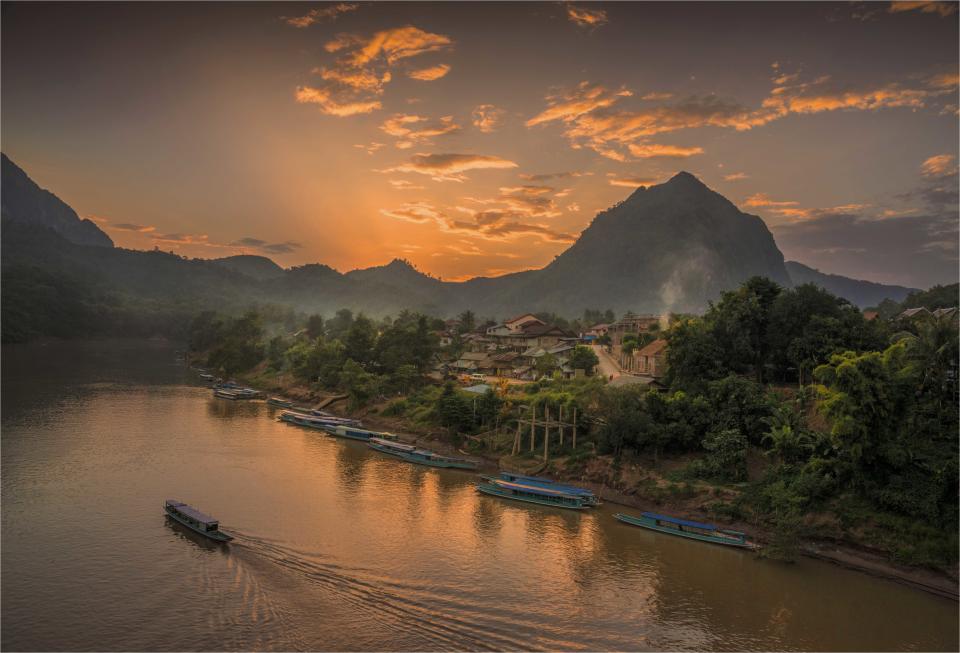
Dusk on the Nam Ou river, Nong Khiaow, province of Luang Prabang, Laos
With much to see and do, having a local guide is an enriching experience, given the amount of firsthand knowledge he or she can bring. The scope of what’s possible and value when it comes to escaping the beaten tourist path is unmatched. Herewith, a few musts when visiting these compelling destinations.
Siem Reap, Cambodia
WHERE TO STAY
Amansara
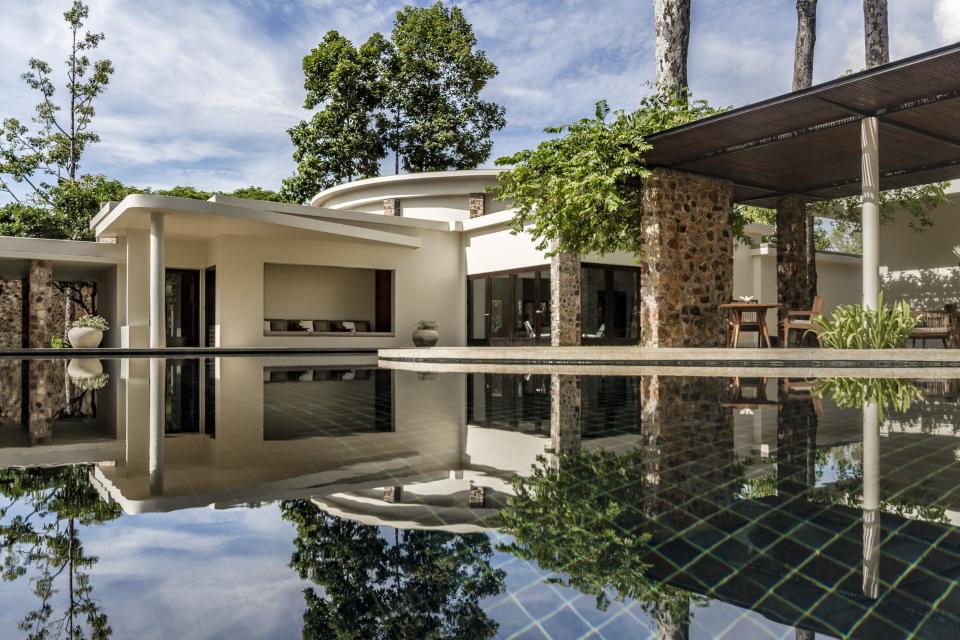
Main pool
What today is the serene 24-room Amansara was originally built in the 1960s during Siem Reap’s Golden Age, in the New Khmer Architecture style, as a royal villa for hosting international visitors. As a restored resort it celebrates the unconventional original shapes, like a circular dining room-slash-lounge and an irregularly shaped pool. Privacy is the name of the game here, especially in airy minimalist rooms opening to their own private pools. Culture and community are important parts of the experience on the property, too, and both amenities and offerings reflect that—think in-room platters of exotic fruits (not to mention mouthwatering food in the restaurant), impromptu lotus flower–folding lessons, and even transcendent massages from local therapists. aman.com
Shinta Mani Angkor
Acclaimed architect-landscaper-designer Bill Bensley is behind the entire eclectic Shinta Mani compound in Siem Reap (comprising three hotels), but the high-end villa-based Bensley Collection, which opened in November 2017, is like its radiant crown. He loaded the ten supremely livable two-floor villas—featuring indoor/outdoor tubs and showers, verdant private rooftops, and black-and-white-tiled lap pools with opulent details such as sculpted walls that mimic ancient King Jayavarman’s robes. One inspiration for the property was Jackie Kennedy’s spare-no-expense visit to the area in 1967, and, appropriately, each accommodation comes with its own butler. shintamani.com
Phum Baitang
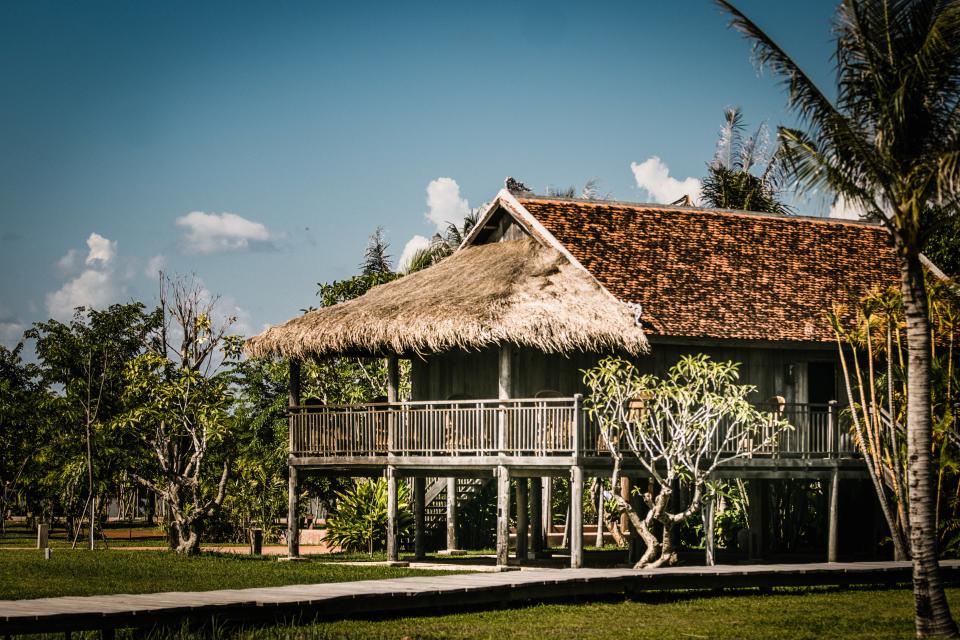
Outside the hum of the city (just a $5 tuk-tuk ride away) is Phum Baitang, a super-private Colonial-inflected resort with well-appointed rooms and a cocktail bar serving excellent libations in a converted 100-year-old traditional Cambodian house that faces the rice fields and sunset. The bucolic views and promise of evocative food are significant draws, even if just for a meal.
WHERE TO EAT
Mie Cafe
Owned by a passionate young Khmer chef who left Siem Reap to train and returned home to debut his dream of an open-air restaurant, complete with herb garden, this casual eatery inside a wooden house is the place for beautifully composed signatures and creative expressions of the local cuisine fused with others. The menu features delicacies like Tonle Sap lake fish and squid ink ravioli, but the set five-course dinner only sets you back the cost of an average lunch in an American city.
miecafe-siemreap.com
Malis
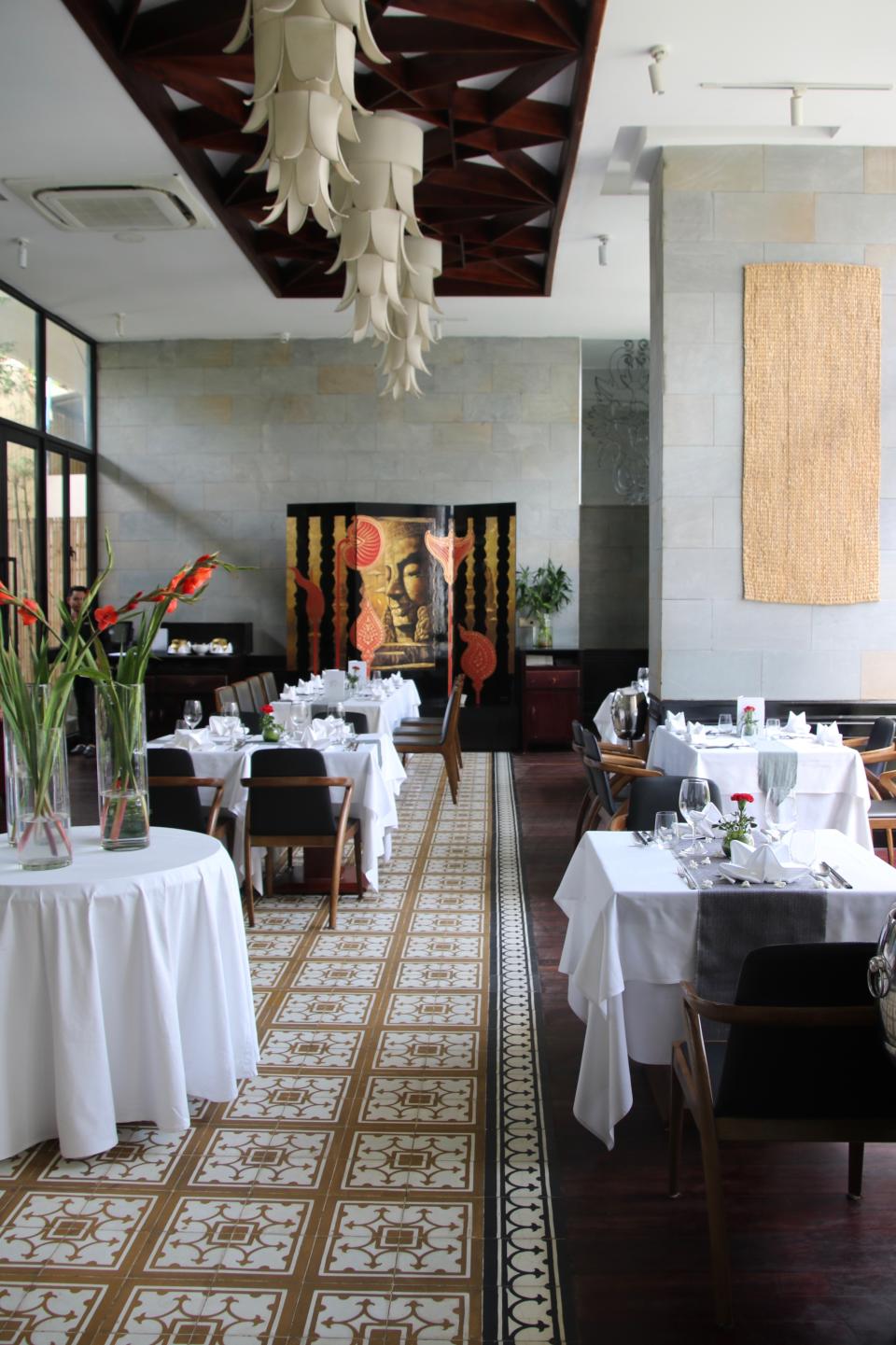
Overlooking the Siem Reap River, this grand restaurant serves what they call “living Cambodian cuisine.” At a jasmine-sprinkled, white-tableclothed table, it’s wise to share dishes from the extensive menu, which offers seemingly endless possibilities for flavor profile and texture plus explanations of some of the most important cooking styles and traditions. malis-restaurant.com
Kroya
Meaning “food” in the Khmer royal language, this restaurant at Shinta Mani Angkor is a place that stimulates all the senses, from sight—the ceiling-to-floor restaurant design is as beautiful as the ceramic dinnerware and plating—to taste. Dishes incorporate a variety of proteins, like local lake prawns and frog legs (rolled in mango), and are appropriately flavorful yet light. With its savory and fragrant clarified broth, the duck soup is not to be missed. shintamani.com
WHAT TO DO
Angkor Wat, Koh Ker, and More
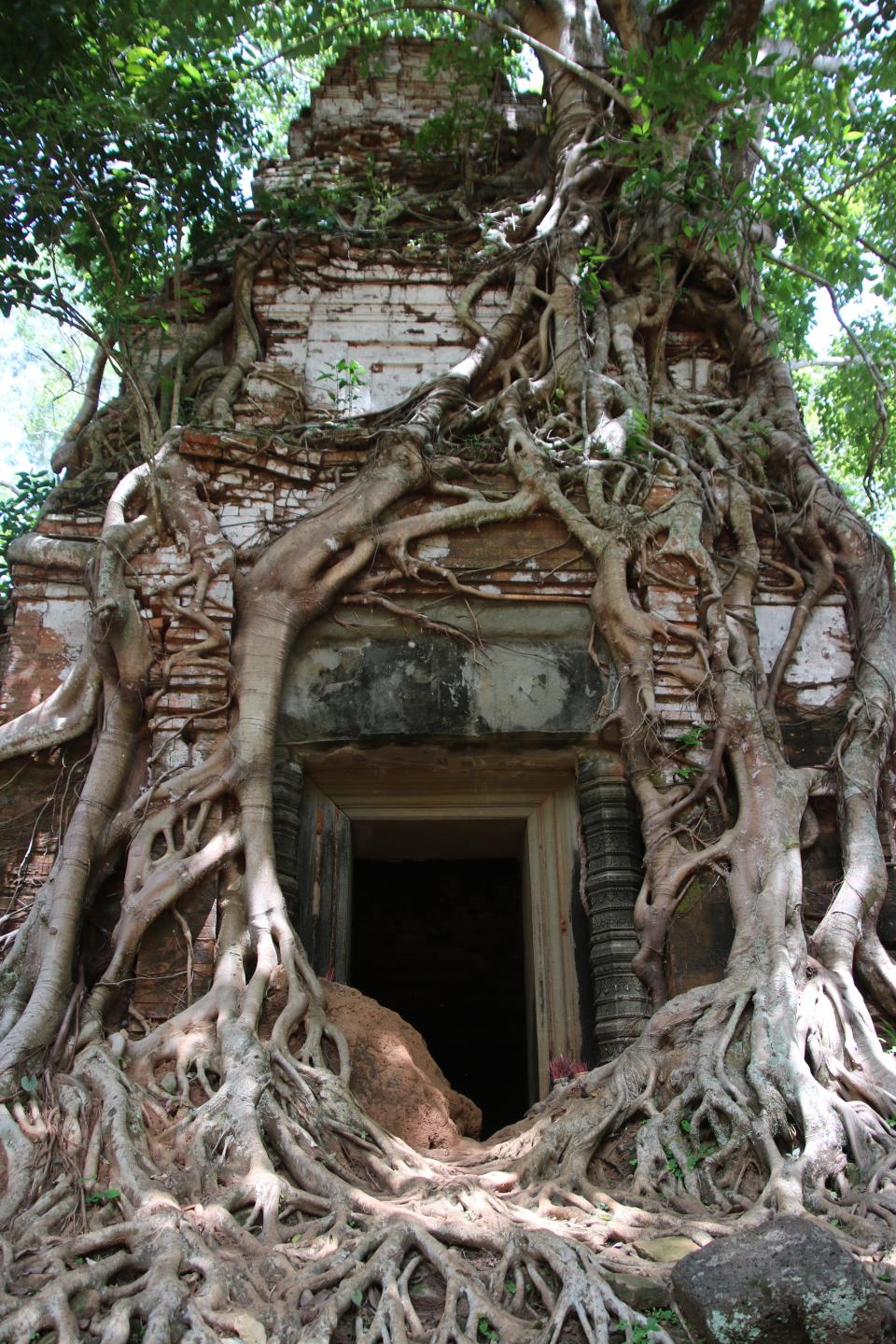
Once you stand in front of—and then inside—the 12th-century temple complex of Angkor Wat, the world’s largest religious monument, it becomes clear why it’s such a popular tourist destination. Its ahead-of-its-time sandstone construction, richly carved yet minimal in a way, inspires awe and begs a guide to explain its importance. But it’s by no means the only temple worth visiting. Nearby Ta Prohm is exquisite, with its strangler figs’ silvery roots completely taking over some of the breathtaking temples around Koh Ker, the site of a former capital and a massive pyramid structure that affords epic views.
Tonlé Sap
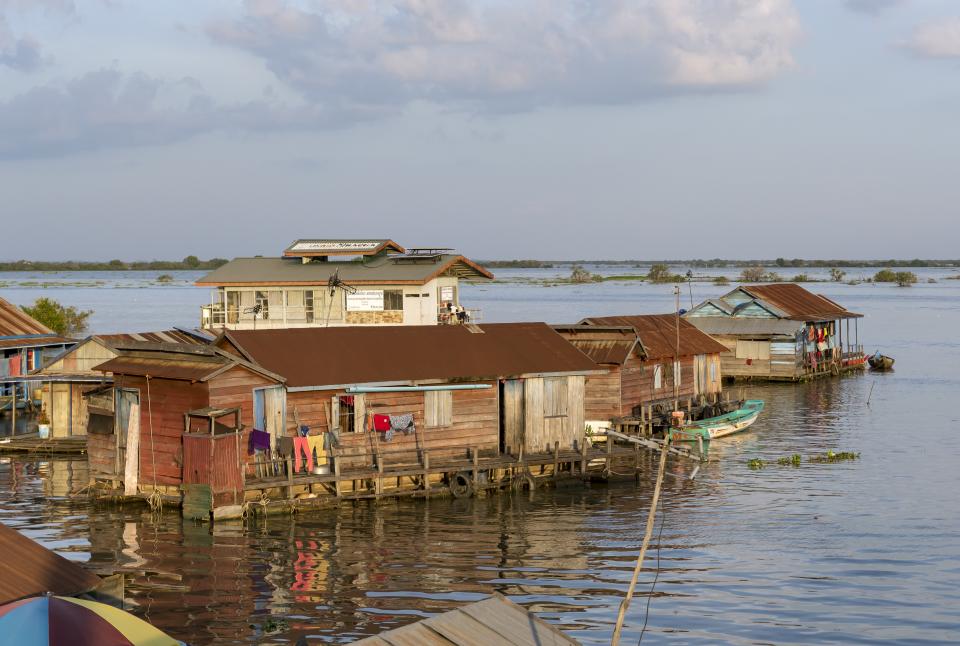
Floating Houses, Tonle Sap
Southeast Asia’s largest lake and its floating villages can—and should—be experienced two ways: via a helicopter tour (which also gives you a bird’s-eye view of a dozen or so important temples) or boat cruise. Tool around on a private boat, ideally with cocktails (Amansara has the perfect vessel) just before sundown and observe the simple, exotic lake life and quaint, vibrantly shaded architecture.
Apsara Dance Performance
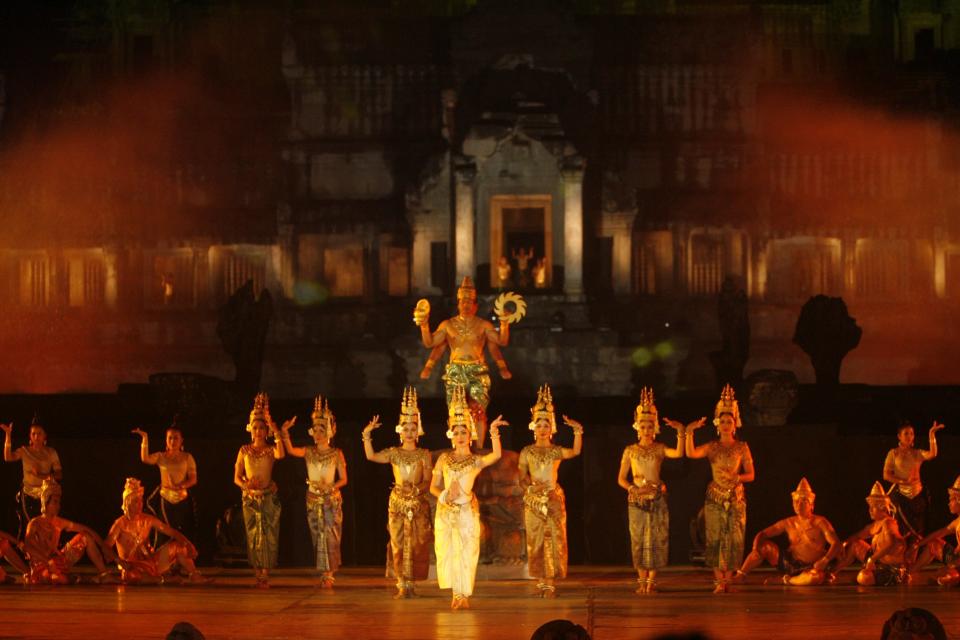
The first ever splendid show at Angkor Wat : 'The Legend of Angkor Wat : When history comes to life' in Angkor, Cambodia in November, 2007.
The most conspicuously beautiful inhabitants of all the temples are the Apsara dancers—voluptuous, fancifully dressed bas-relief carvings that reference the ancient entertainers still relevant in today’s culture. The dance itself was named by UNESCO a “Masterpiece of Oral and Intangible Heritage of Humanity,” and a most authentic version can be seen performed by the Sacred Dancers of Angkor, a professional troupe that shimmers in gold while exquisitely and precisely moving to live music.
Photography Tutorial and Art Tour
Art lovers might have interest in a customized experience organized through A&K that includes private visits to some of the artisan workshops—one well worth seeing is Golden Silk, where the entire process from silkworm to glamorous finished textiles is illuminating—in the area. It is also possible to book a tutorial with locally based American photographer John McDermott, who shares tips for more successfully capturing the beauty of the destination.
Luang Prabang, Cambodia
WHERE TO STAY
Rosewood Luang Prabang
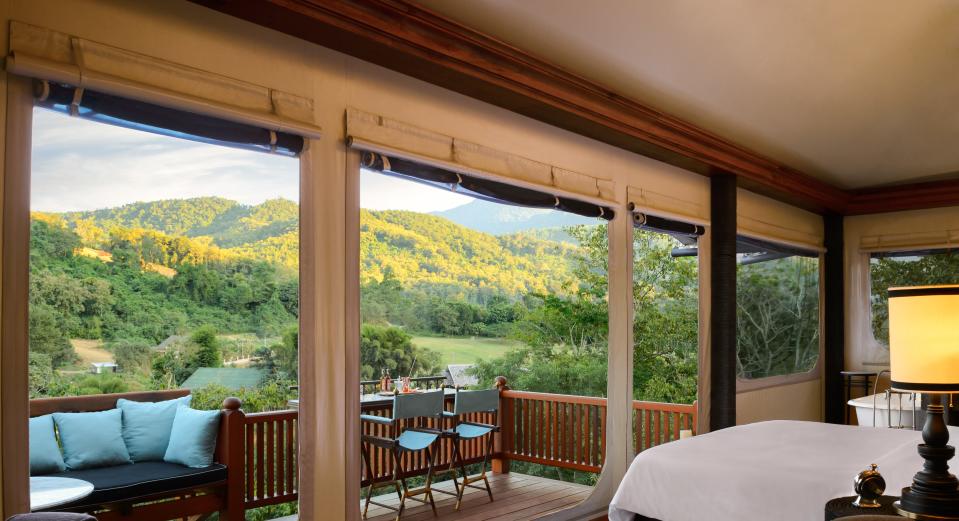
Also a Bensley creation, this brand new Rosewood sits in the hills just outside the UNESCO-protected town of Luang Prabang, beside a waterfall-studded river. Here the architect and designer let his imagination run wild, theming each of the 23 rooms, suites, and even stilted tents around a different historical figure or indigenous tribe. The result is pure eye candy, in not only the private spaces and grand open-air Great House restaurant but the tented Sense Spa, where windows beneath massage beds allow those being pampered to watch the lush stream slip by beneath them. Mountain biking, waterfall treks, and walking through quiet temples and farms with a local guide are a few activity options. rosewoodhotels.com
Amantaka
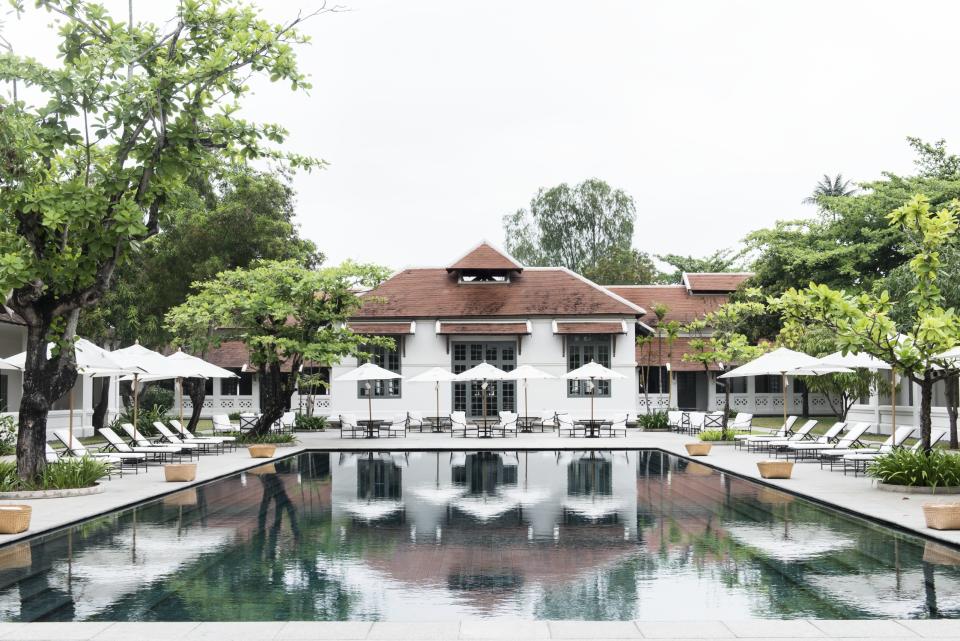
Amantaka-10
Situated right in town, the historic whitewashed French colonial compound-turned-five-star resort is as peaceful as any of the brand’s idylls, from the 5:30 A.M. daily alms-giving (called tak bat) to the monks who stop by in front of its gate to collect sticky rice offerings to candlelit dinner beside the reflective pool to the delicate sounds of local musicians. Intimate yet expansive feeling for a “city” bolthole, its location is perfect for walking to restaurants, temples, and the massive night market for shopping. But as much as there is to do outside its walls, the atmosphere inside—especially the classic rooms and suites with their own swimming pools—makes it a welcome retreat from the heat and activity. aman.com
WHERE TO EAT
Cafe Toui
For the best, most authentic (and non-GMO) Lao cuisine, this is the ticket. The charming little restaurant right off the main street sticks to the country’s classic flavors and preparations (leave room for the sticky rice with mango for dessert), which are absolutely addictive.
The Belle Rive Terrace
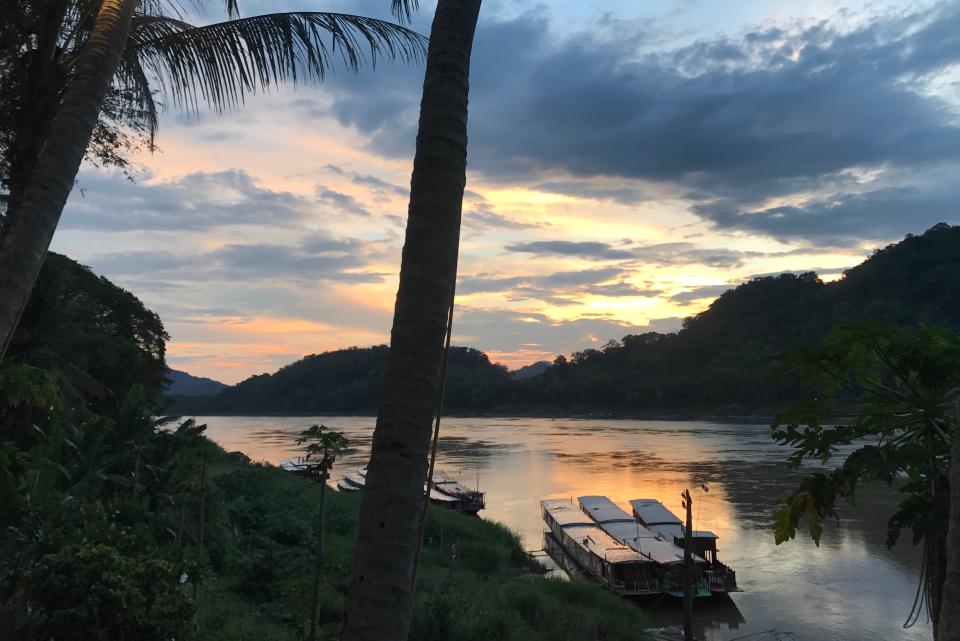
The Mekong River is at the center of the action, and there’s no better place to watch the sun set behind it than a terrace perch along the verdant bank, cold beverage in hand.
Tangor
This cafe and restaurant makes an ideal place to relax with a chilled rum cocktail in an eclectic ambience inspired by French Colonial, right down to the music. With low rattan chairs overlooking the main street, it’s slightly buzzy yet relaxed and offers both Lao and Western bites.
Coconut Garden
With a shady rooftop and garden strung with colored lanterns, this casual restaurant is an appealing option in the heat of the day for a vast selection of savory favorites (fried boneless pork ribs among them) and a Beerlao.
WHAT TO DO
Temples
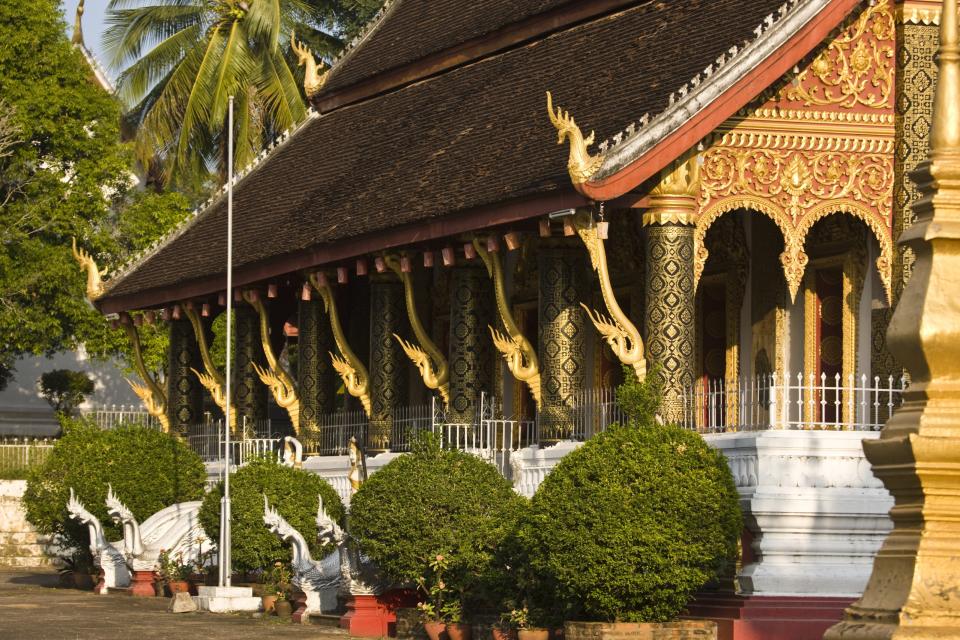
Laos, Luang Prabang, Wat Ho Siang
Luang Prabang’s many temples—and even local architecture—look quite different from other Southeast Asian styles, oftentimes incorporating layered roofs and decorative trims, plus a significant amount of Japanese glass mosaic. Wat Xieng Thong is perhaps the most stunning example, while stupas, like Wat Visoun (nicknamed the Watermelon Stupa), provide a sculptural balance to the flashier gilded Buddha-filled holy places.
The Buddhist Archive of Photography and Museums
Buddhism is taken very seriously in Luang Prabang, where there are dozens of temples full of monks, some of whom have been photographed over the last century in beautiful black and white and archived in a small center. It’s where visitors can learn more about the religion and meditation practices, whereas the nearby Traditional Arts & Ethnology Centre displays crafts and costumes of Lao tribes. The Royal Palace Museum is also a worthy stop for a look at the opulent former home of the king and queen. A guide is recommended for the stories he or she can elaborate on.
Wellness Cruise and Aman Spa
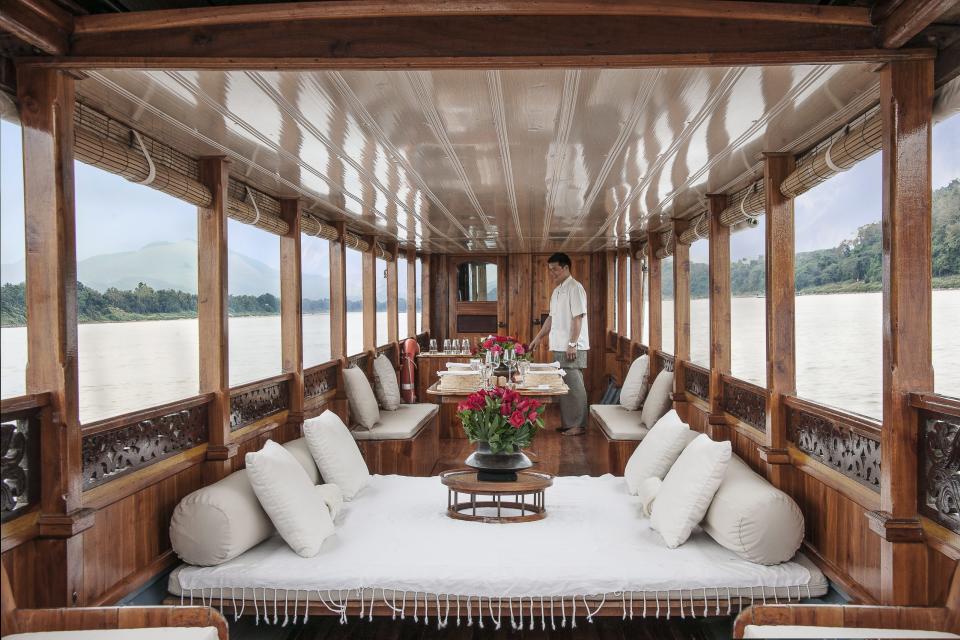
Boat interior
A true wellness haven, Amantaka’s spa is where magical therapists treat both body and mind. Their traditional Baci ceremony, performed by elders ideally after a local scrub and massage, bestows good luck—and guarantees smiles—while the new nourishing facial is as much a treat for the soul as for the complexion. The spa’s Wellness Cruise—early in the morning down the misty Mekong River to the Pha Tad Ke Botanical Garden for yoga, meditation, and a walk through the gardens, plus a healthy breakfast picnic en route back—is the surest way to find monk-like peace.
Kuang Si Waterfall
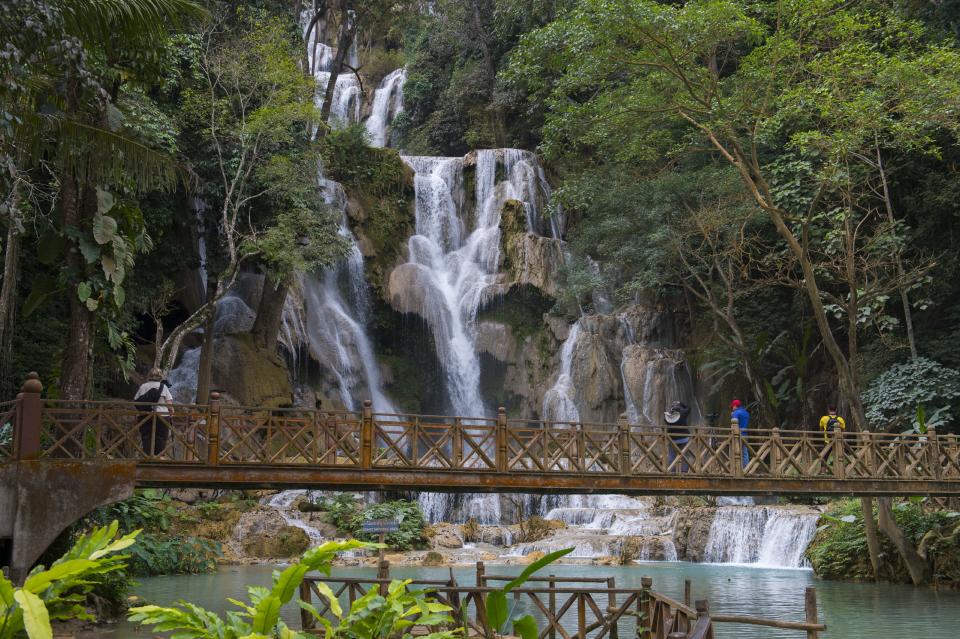
Nature
Given how Laos is landlocked, one doesn’t expect to see, let alone swim in, the kind of otherworldly aquamarine water of Kuang Si waterfalls, a handful of dreamlike pools and falling water that extend up a path and culminate in the 80-meter-high crown. Weekends see more local families than tourists picnicking and playing in the sublime natural limestone pools.

